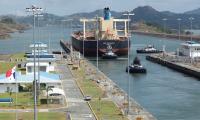North Korea continues to expand its nuclear and ballistic missile capabilities, but the world remains clueless on how to deal with the rogue regime of Kim Jong-un. Over the past month, the Trump administration has started to consider retaliatory measures that include imposing more comprehensive sanctions on North Korea.
Yet, sanctions have failed to stop North Korea from enhancing its offensive capabilities in the past. And there is no guarantee that imposing new sanctions will make any difference now.
Thanks to China’s ambivalent policies, the multilateral diplomatic efforts over the past several years have failed to persuade the leaders of North Korea to slow the country’s nuclear progress. There does not seem to be any hope of a breakthrough in the months to come. In fact, President Trump’s impulsive and volatile foreign policy approach might further aggravate the problem.
The country has made huge progress in its development of long-range missile technology since Kim Jong-un took over in 2011. Pyongyang has deployed more than 800 short-range ballistic missiles (SRBMs) that are capable of hitting targets anywhere in South Korea, and 200 Nodong medium-range ballistic missiles (MRBMs) aimed at target cities inside Japan. In the event of war, North Korea’s missiles can do significant damage to South Korea and Japan, killing at least thousands of civilians in both countries.
Ballistic missiles follow a ballistic trajectory over most of their flight paths and are generally categorised according to their range: short-range (SRBM) with a range of less than 1,000 kilometres, medium-range (MRBM) with an operational range of 1,000-3,000 kilometres and intercontinental-range (ICBM) that can travel more than 5,500 kilometres. North Korea’s Scud ballistic missiles have a range of up to 1,000 kilometres while the Nodong have an estimated maximum range of about 1,200 kilometres. These and other missile systems also give North Korea the ability to strike targets in the Pacific Ocean.
Ballistic missiles are also classified by their fuel types and are described as solid or liquid propellants. Missiles with solid propulsion systems are considered more reliable because they require less preparation. On the other hand, liquid-propellant rockets have to keep their oxidiser and fuel separate before deployment. The Nodong missiles were designed and developed by North Korean engineers with almost no foreign assistance. Experts have pointed out a few problems regarding the accuracy and reliability of these missiles in the past because Pyongyang did not rigorously test them. However, their lack of precision does not make North Korea’s missiles any less dangerous for the neighbouring countries.
North Korea, one of the most dilapidated economies in the world, is spending enormous resources on building intercontinental ballistic missiles. The country is expected to have at least 50 nuclear warheads by 2020. If North Korea’s nuclear and missile programmes are not curbed immediately, the country will most likely develop the ability to hit the US mainland in the next few years. There are genuine concerns that if Pyongyang acquires long-range ballistic missile capability, it might provoke an international crisis by trying to hit targets on American soil. North Korea’s development of nuclear weapons has not only destabilised the Korean Peninsula, but has also created serious implications for global security.
North Korea poses a greater threat today than is widely understood. The North Korean regime continues to hurl threats of a pre-emptive nuclear strike without understanding the dangers involved. Pyongyang must realise that any such move could lead to a full-scale nuclear war, resulting in North Korea’s complete destruction. With North Korea growing more unstable by the day, the Kim family regime’s policy of nuclear blackmail cannot continue for too long.
A number of analysts are still downplaying the threat, resulting in overall complacency toward the North Korean threat. These divergent risk assessments can be attributed to the difficulty of gathering reliable information on North Korea’s missile programme but certain facts cannot be ignored. North Korea is also deploying two intercontinental ballistic missiles: the Taepodong-2, a two or three-stage ballistic missile, and the road-mobile KN-08 missile, which is believed to be capable of carrying nuclear weapons to the US. A two-stage Taepodong-2 could strike Alaska, Hawaii and some part of the west coast, while a three-stage version could strike most of the continental US.
Curbing the spread of missile technology by North Korea has been difficult because of the lack of recognition of the threat it poses. The MTCR has become totally incapable of mitigating the dangers associated with the global nuclear trade because it has not been able to address all these concerns related to missile systems. North Korea has become a leading exporter of ballistic missiles to the entire developing world. It is believed to have exported more than 500 ballistic missiles to different countries. But the existing global non-proliferation regimes fall short of controlling the transfer of missile technology across national borders.
North Korea is one of the most terrible places to live on earth. Contrary to some naive expectations, there is no chance that the Kim regime will freeze or dismantle its nuclear programme, bowing to pressure from the US. Rather, North Korea’s nuclear establishment can be expected to surmount all technical barriers and the country can emerge as a major nuclear power over the next decade. It would not be wrong to say that North Korea has emerged as a problem without a solution.
However, building nuclear weapons will not give Pyongyang anything but delusions of grandeur. If North Korea wants to emerge as a respectable nation, it must abandon its burgeoning nuclear programme and focus on restoring its economic stability. But there is a low probability of such an event in the foreseeable future.
Email: rizwanasghar5@unm.edu
According to Trump, US is earning $2 billion per day in newly-introduced trade tariffs
Negligible contribution of e-commerce underscores persistent reluctance towards digital adoption
Pakistan has become soft state where state cannot even ensure removal of graffiti from walls
Developing human resources is expensive and time-consuming and Pakistan cannot develop without investment
To reach full potential, AI must complement human and social dimensions of learning, rather than replace them
Five people were killed, including one of the guards after being hit over the head with a fire extinguisher







